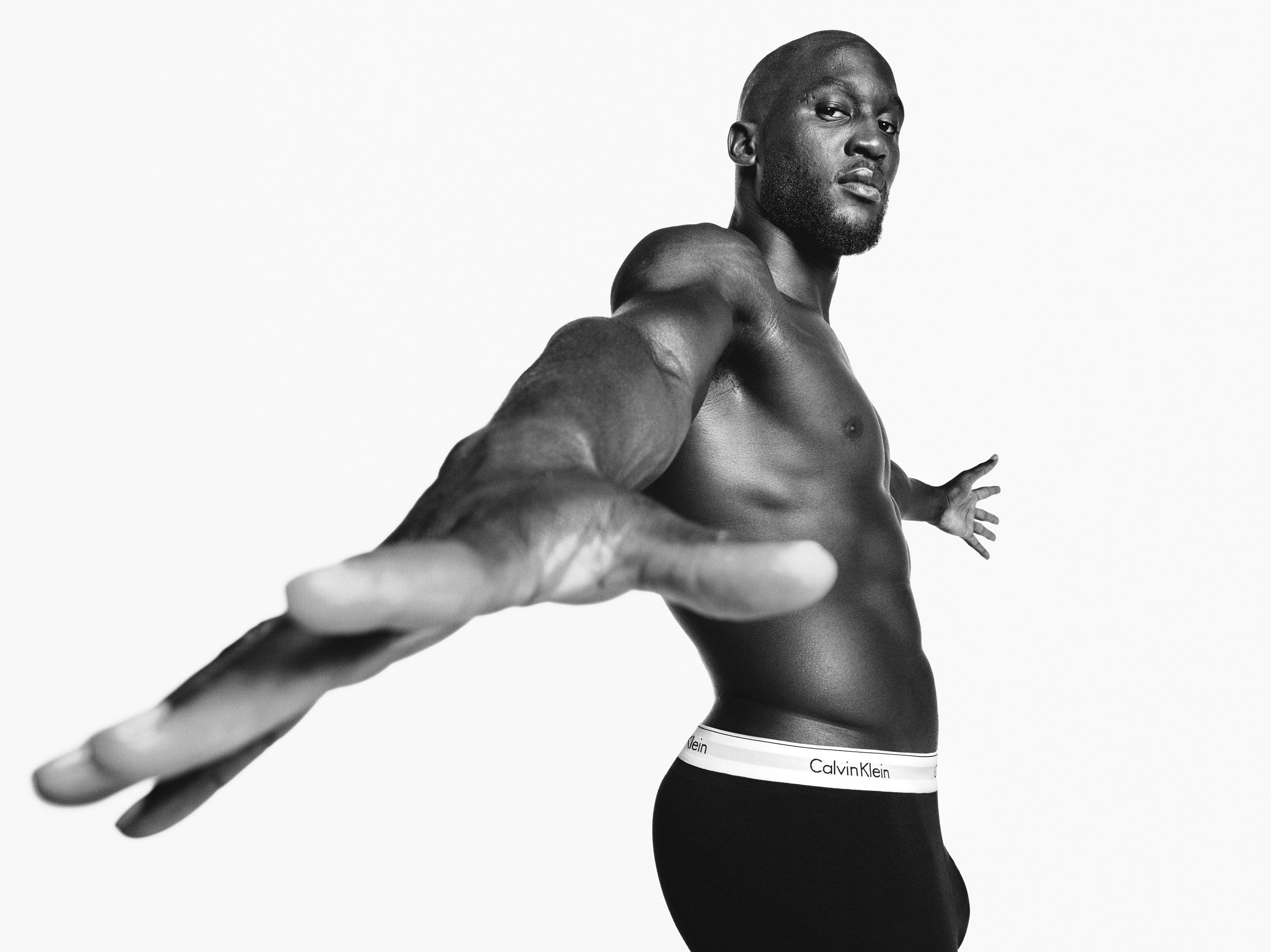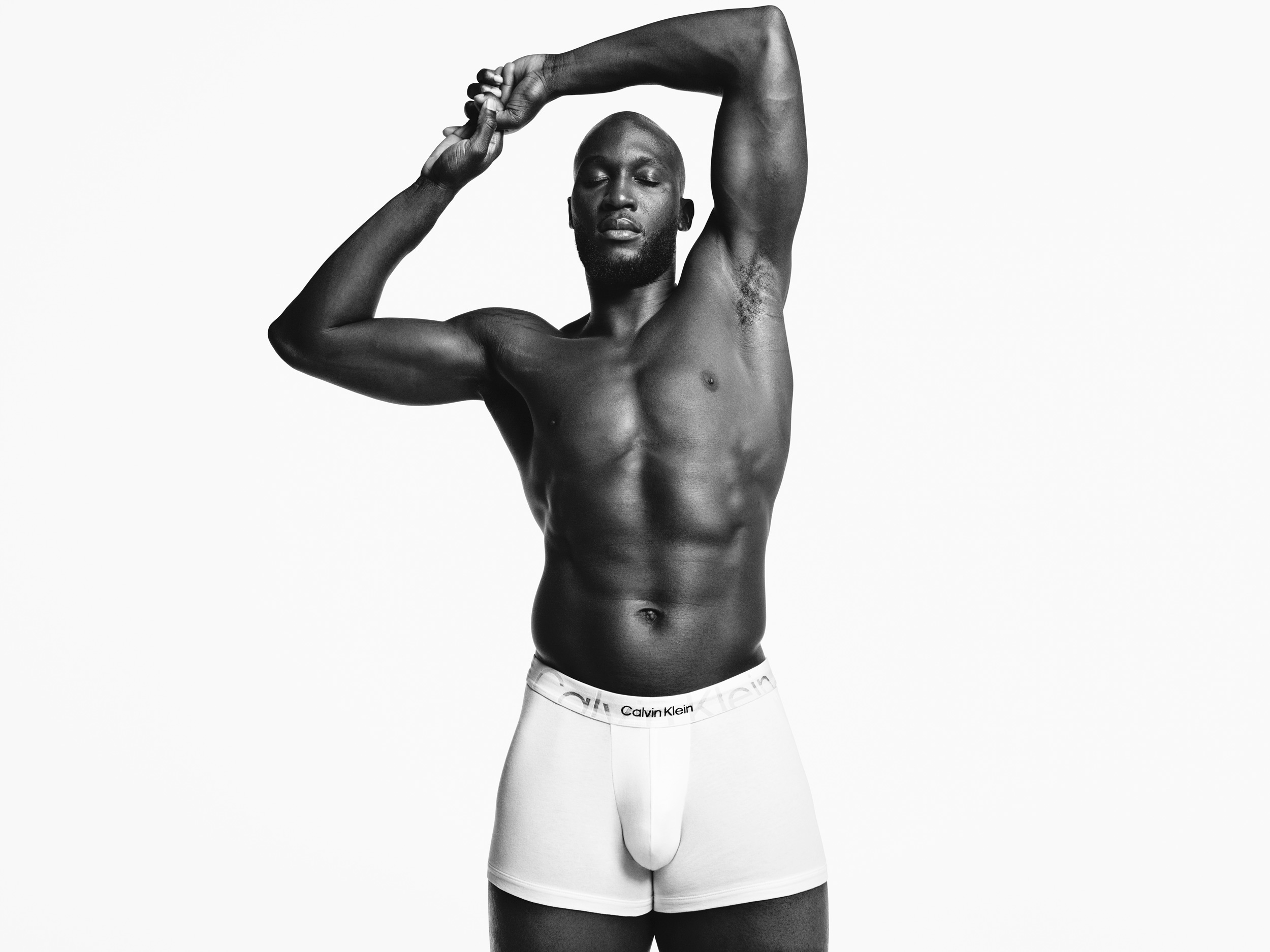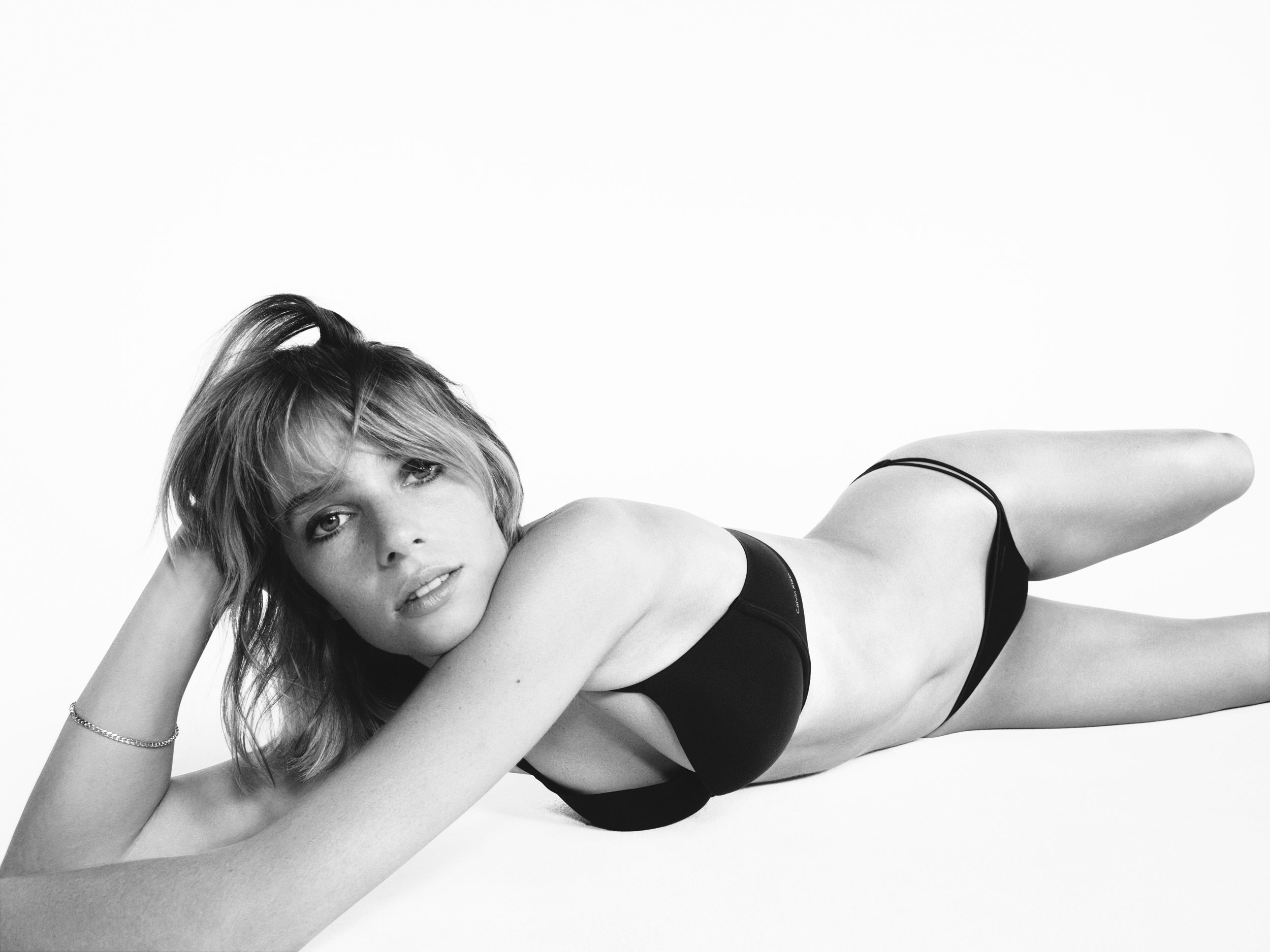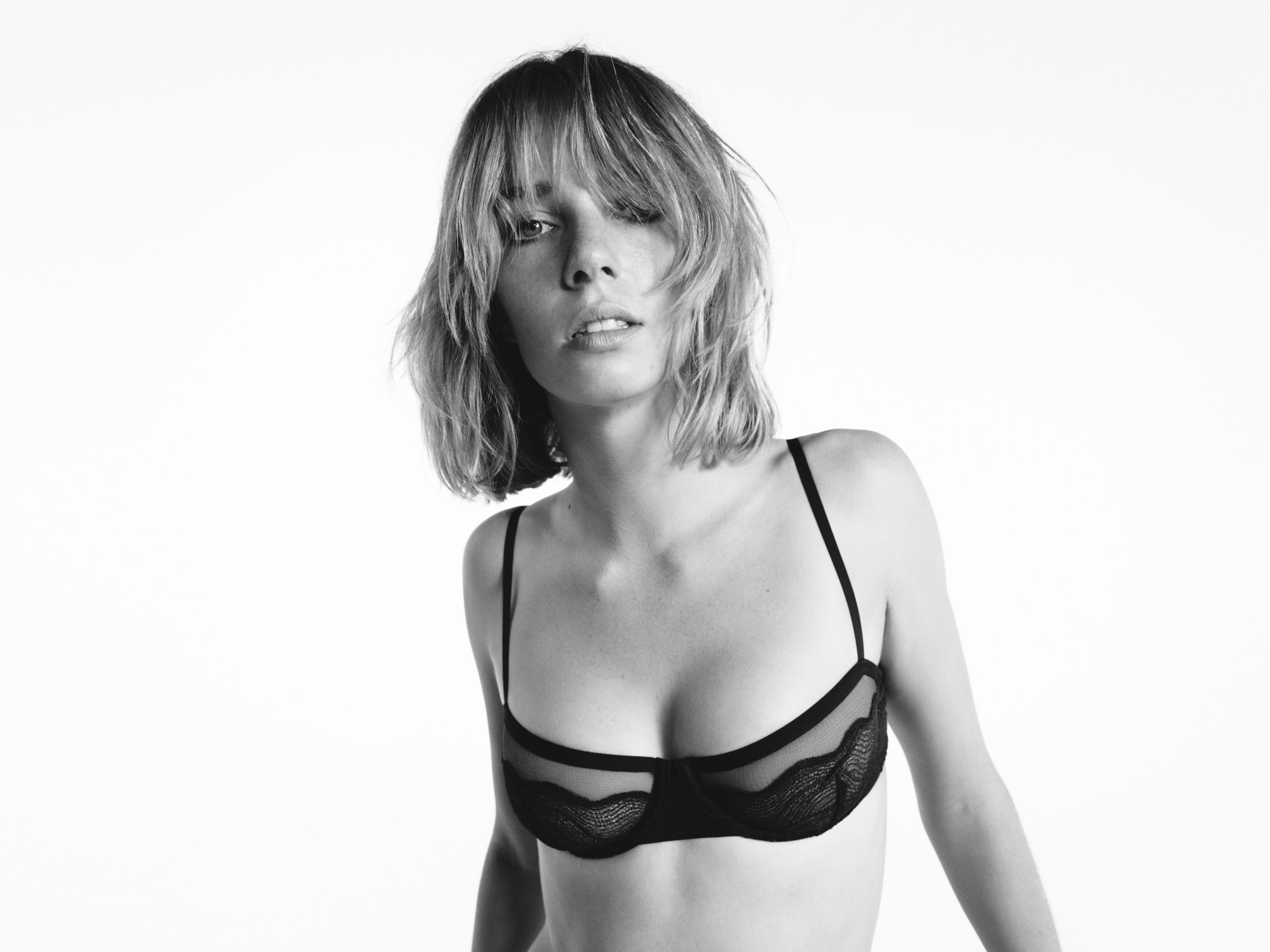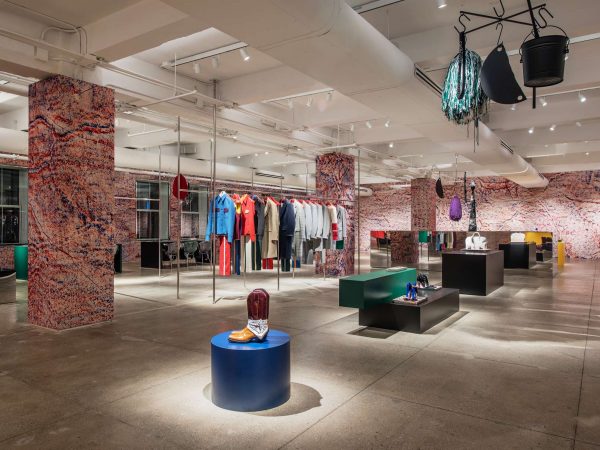“Everyone has a story, a background, something or someone they love, some struggle, some obsession. I love to tap into it all.”
It’s not an exaggeration to say that photographer Gray Sorrenti grew up on set. “I played, bugged the stylists, chatted with the models, hung out with the hairdressers and makeup artists,” she says, recalling formative years spent shadowing her father Mario Sorrenti, who is among today’s most celebrated photographers. In years since, she’s developed her own photographic practice, something she explains is “like a love affair,” if only for the duration of the shoot. “I work off raw emotion,” she says. “I want to learn, experience it, and really go there——I have to connect to the people I photograph. Everyone has a story.”
In her recent campaign for Calvin Klein, Sorrenti zeroed in on the narrative of the brand, mining its cultural significance to inspire her approach. “Calvins are worn with confidence all around the world—it’s obvious when you see them peeking out,” she says, describing the blank canvas the brand signifies—its opportunity for inclusive self-expression, part of what makes their undergarments among today’s most important and recognizable. She wanted to capture the impact of Calvins not only as a clothing item, but also as a tool for bringing aspects of the self out to play: “To me, sensuality is when the subject finds their inner strength,” she expresses, describing her experience on set. “It’s very personal, but I see it when it comes through. When there is a strong connection and no distraction, it’s clear when the magic happens.”
To Sorrenti, the human story of struggle, success, passion, and perseverance is a wellspring of inspiration, and campaigns are an opportunity to map these concepts onto objects in the physical world. “Good storytellers blow my mind,” she says. “And the artists who can translate and weave those stories into their work are the ones that I find most exciting. Whenever I shoot, it’s about collaborating: coming together to exchange thoughts and ideas, and seeing where you end up.”
Camille Sojit Pejcha: Your photographic style has been described as very intimate. How do you cultivate that in your relationship with the subject, especially with someone you’ve never met before?
Gray Sorrenti: I work off raw emotion. I want to learn, experience it, and really go there—I have to connect to the people I meet and photograph. Everyone has a story, a background, something or someone they love, some struggle, some obsession. I love to tap into it all. It’s like a love affair, even if it’s only for a few hours. I respect the process. It’s a really beautiful journey every time I shoot someone, and I’ve made some really good friends as a result.
Camille: How do you approach the image-making process when capturing models who are primarily nude, versus clothed?
Gray: My job is to make the person feel good, whether they are nude or clothed. I always introduce myself before we shoot, and during that time we talk about the intention and what we want to create together. It’s important to make a connection and build trust with the person. I want them to feel comfortable, confident, strong, and beautiful.
Camille: What makes a sensual photo? An intimate one?
Gray: To me, sensuality is when the subject finds their inner strength. It’s what you feel when you’re at your most confident. It’s very personal, but I see it when it comes through. When there is a strong connection and no distraction, it’s clear when the magic happens.
Camille: As a photographer and creative, what are your favorite parts about shooting for a campaign versus your own personal work?
Gray: Whenever I shoot, it’s about collaborating: coming together to exchange thoughts and ideas, and seeing where you end up. I bring a personal part of myself into every shoot.
Camille: Is there a specific quality you look for when it comes to artistic collaborations, such as your recent work with Calvin Klein? In your eyes, what sets the brand apart?
Gray: It’s the ultimate classic, yet is still so fresh. Calvin gives you a blank canvas, upon which you are able to collaborate and create powerful, memorable images that stand through time. Calvins are inclusive—everybody wears them. They are worn with confidence all around the world—it’s obvious when you see them peeking out. A pair of Calvin underwear is one of the most important pieces of clothing of our time, and that’s very cool.
Camille: Speaking of which, what was it like working with Maya Hawke and Romelu Lukaku for Calvin? What drew you to them, and what was the most memorable part of the shoot?
Gray: Maya [Hawke] and I went to school together. I would see her in the morning at Nectar Cafe, so it was great to meet again and work together. It was sweet and intimate. We felt we could relate to each other on many levels. We gave each other strength: She’s real, she’s powerful, and shooting her made me feel strong, too. We had a really nice time on set. We trusted each other, and she killed it.
Romelu [Lukaku] was equally gorgeous, inside and out. We laughed the whole time. He towers over me, so I had to stand on two apple boxes most of the time to be at eye-level with him. His time is very precious, as he spends hours a day training and practicing, so I really appreciated when he came in and gave me his undivided attention, and was excited [to learn] about my process.
Camille: As a creative, do you have a concept or idea you often return to to direct your work?
Gray: Always being honest.
Camille: What photographers do you most admire? What about a creative whose work inspires you outside of photography?
Gray: I’m inspired by the works of Daido Moriyama, Nan Golden, Bruce Davison, and Diane Arbus, to name a few. I’m usually drawn to the photographers who capture raw feelings. The human story of struggle, success, passion, and perseverance inspires me; good storytellers blow my mind, and artists who can translate and weave those stories into their work are the ones I find most exciting.
Camille: You and your father, Mario Sorrenti, are both working photographers. Do you talk about photography often? What wisdom have you gleaned from his career path, and how has it informed yours—both through similarities and differences?
Gray: He’s on speed dial! We talk all of the time—not only about pictures, but also about life, love, art, and practical things, as well. He gives great love advice. I grew up sitting next to him while he took pictures. I played on his sets, bugged the stylists, chatted with the models, hung out with the hairdressers and makeup artists. I witnessed his whole beautiful process of creating an image, studying light, connecting with his subjects, researching, editing, printing and his meticulous layouts. His attention to detail is phenomenal. I love his process and feel very lucky to be influenced by him and his art.



